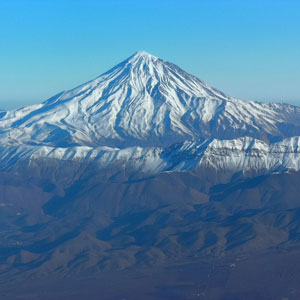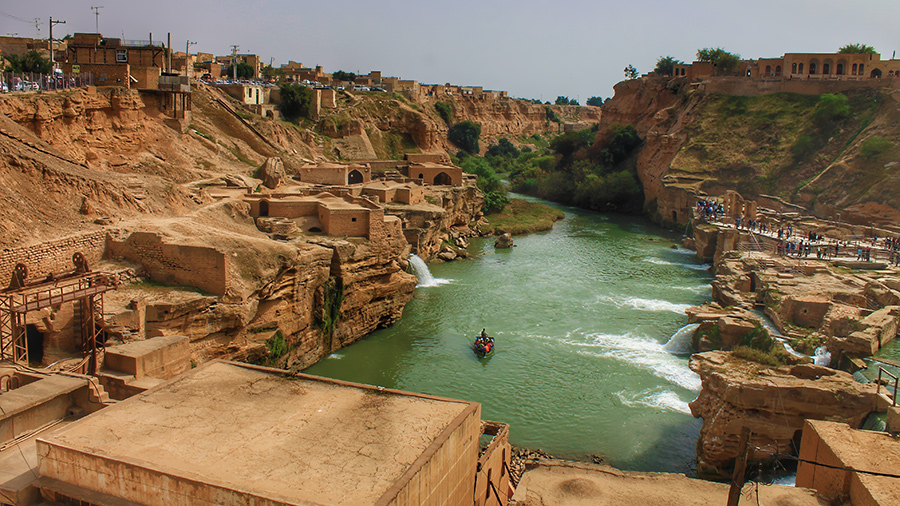 Signin with Google
Signin with Google Signin with Facebook
Signin with Facebook


 Places,Nature,Culture,History
Places,Nature,Culture,HistoryThe Heritage of Water and Engineering at Shushtar Historical Hydraulic System

At the foot of the Zagros Mountains, where Karun River heads to Khuzestan plain, the most water bank zone of Iran, conquering the enchanting triangle of "Shush", "Shushtar" and "Chogha Zanbil", the story of importance in the ancient era begins.
It was Karun, the only river of entire Iran with a shipping navigational system that spread mercy onto the island city of Shushtar, in the occupation of semi-desert land standing in the way of its stream.
It is believed that Darius the Great himself initiated the construction of Shushtar's irrigation system, back in the 5th century BCE. Yet, this masterpiece of engineering was the gem of the later Sassanian Empire, under the reign of one of the most powerful Persian kings, Shapur the Great, 1700 years ago.
The creative genius of the Shushtar hydraulic system bears witness to a rich technical culture that is built to serve sustainable development compatible with the natural and urban environment. Today its efficient operation is the testimony to express its value of diverse usages as civic water supply, mills, farmland irrigation, river transport, and defensive systems for unwelcome visitors.

An inventive network of tunnels, dams, and bridges of the island city
Persians created a complex engineering system to optimize the power of the Karun River on the cliff of soft rock, building two canals to divert the flow of water, and a network of dams and bridges. Soon, water rushed to the historical oasis city of Shushtar, in the intricacy of man-made watercourses. With a sophisticated system, it was possible to control the level of water, in order to prevent any damage.
Shotit and Gargar branch canals are being separated from the Karun at the entrance of the city to flow separately into the barrages, tunnels, Qanats, waterfall and mills then rejoin their mother stream 40 kilometres downstream. The first barrage of Band-e Mizan was erected over Gargar and afterwards, a series of 14 mill, waterfall and dams were constructed. If any section malfunctions, the entire group will be taken down.
The Marashi house located at the best point of the historical system possesses an enthralling landscape of cliffs that water cascades into the basin. It then pours southern plains and orchards. On the north side of the complex, there are still the ruins of the electric company once built to produce electricity from the power of water as well as the ice factory on the west side of the area. The utmost economic event of the Shushtar hydraulic system relied on trading goods between foreign companies and Shushtar merchants whose invoices and bills are found currently. Ships used to harbour a little distance from the city in the Karun River to load goods.
Orchards and water wheels along the Karun River
Ingeniously, this water was also used to turn the wheels of about 50 watermills for grinding the wheat of the fertile plain of Khuzestan. It provided the necessary conditions for the ancient fortress city to prosper as an important agricultural centre. In small rocky chambers, people would come to grind wheat, barley, and sesame into flour, surrounded by the sound of rushing waters. Inhabitants also took advantage of the river banks, by carving underground rooms to take refuge from the heat during the hot summer days.
Many world travellers came to admire Shushtar and recall its wonders to the world, such as the French archaeologist Jane Dieulafoy, who qualified the site as the biggest industrial complex before the Industrial Revolution. Six hundred years earlier, it was the Moroccan explorer Ibn Battuta who wrote down his amazement, noting: "On both banks of the river, there are orchards and water-wheels, the river itself is deep and over it, leading to the travellers' gate, there is a bridge upon boats..."
A unique Lifestyle under the shade of Karun
At the shore of Karun River where the branches unit downstream, a rare and interesting lifestyle can be seen. Mandaeans, the small ethnoreligious followers of John the Baptist whose temple is the flowing water of Karun, gather on each Sunday morning to bathe in Karun. From generation to generation they have been practising the profession of goldsmith and truly they are gifted in this field. Manda means "Knowledge" in the Aramaic dialect.
A masterpiece of creative genius
The inventive system is considered a "masterpiece of creative genius" by UNESCO, and can still be observed today working. Blue deep water keeps cascading over ochre rock cliffs, to be poured into a pond by a series of stunning waterfalls. In confined underground chambers, many watermills are still preserved and functional.
